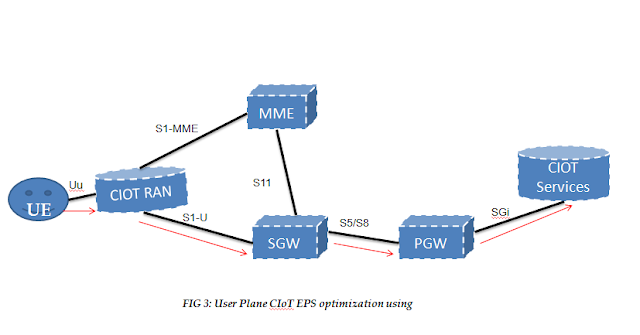User Plane CIoT EPS optimization
Home LTE NB-IoT 5G(NR-NSA)
Hi Guys today we are learning about User Plane CIoT EPS optimization in detail for NB-IoT, For more update Please visit our NB-IoT page.
User Plane CIoT EPS optimization:
The User Plane CIoT EPS Optimization is a functionality through which user plane data can be transferred without using the Service Request procedure to establish Access Stratum (AS) context in the serving eNodeB and UE.
This method is based on User Plane transport of user data in which data is transferred over the conventional user plane through the network from the eNB to the S-GW and vice-versa.
User Plane Data is transferred through the conventional route, i.e. through radio bearers via the SGW and the PGW to the application server. There is some overhead on building up the connection; however it facilitates a sequence of data packets to be sent. Both IP and non- IP data can be delivered through this path.
To keep the UE complexity low, only one or two DRB can be configured simultaneously.
Two cases of RRC Connection can be distinguished:
· If the RRC connection is released with a possible resume operation indicated, the connection may be requested as a resume procedure. If this resume procedure is successful, security is established with updated keys and the radio bearers are set up like in the previous connection.
· If there was no previous release with a resume indication, or if the resume request was not accepted by the eNB, security and radio bearer have to be established as shown in the next section.


In ECM-IDLE state the LTE network cleans up the UE context. S1U should not be there to forward traffic.
ReplyDelete